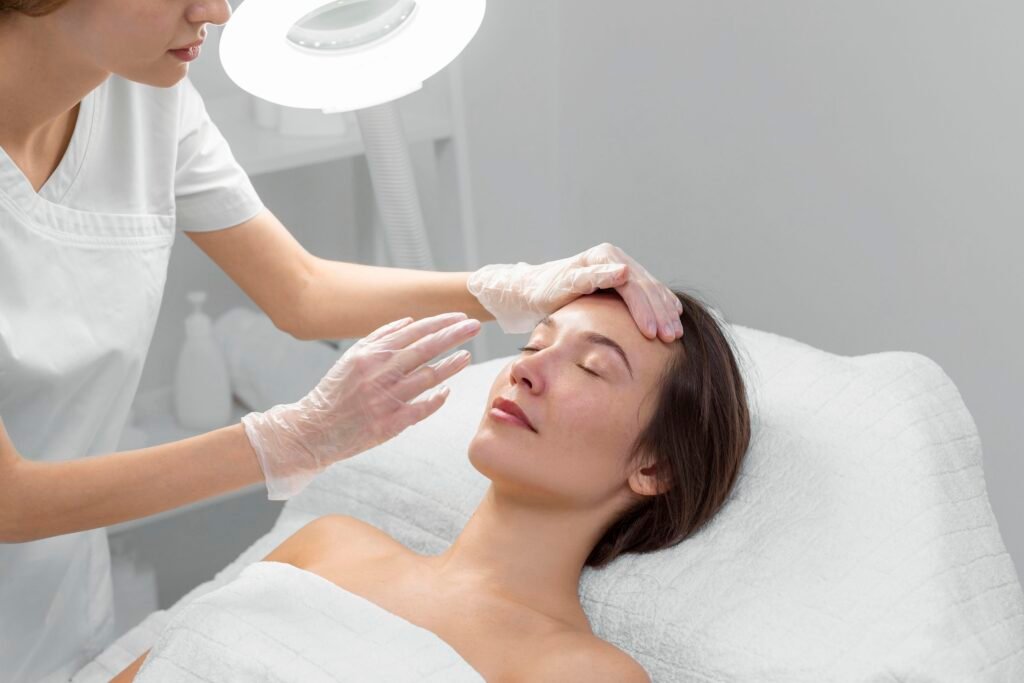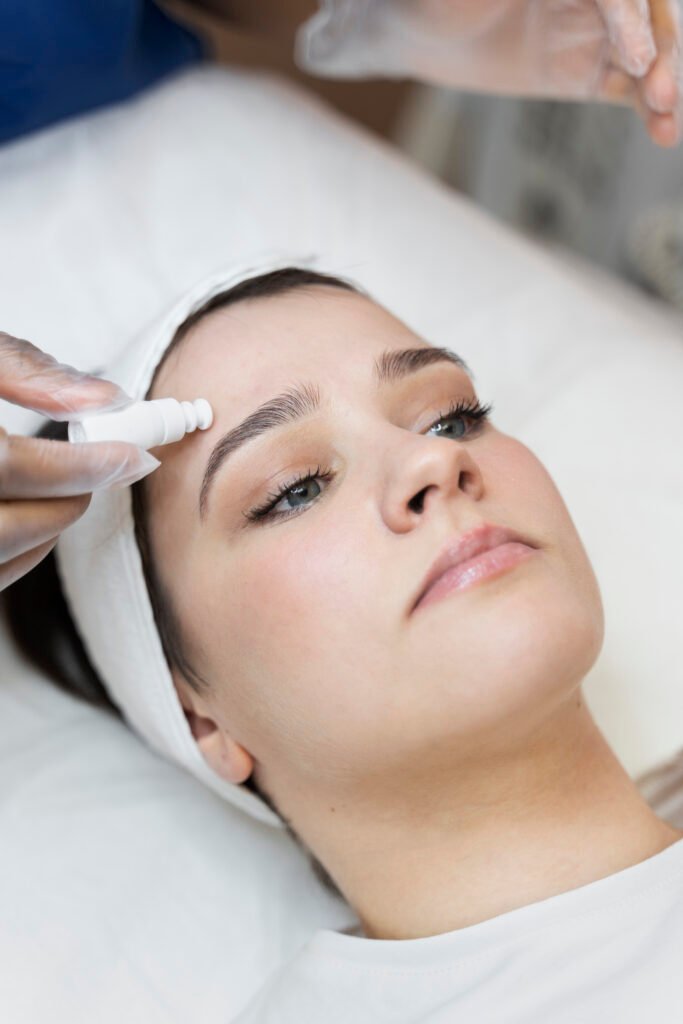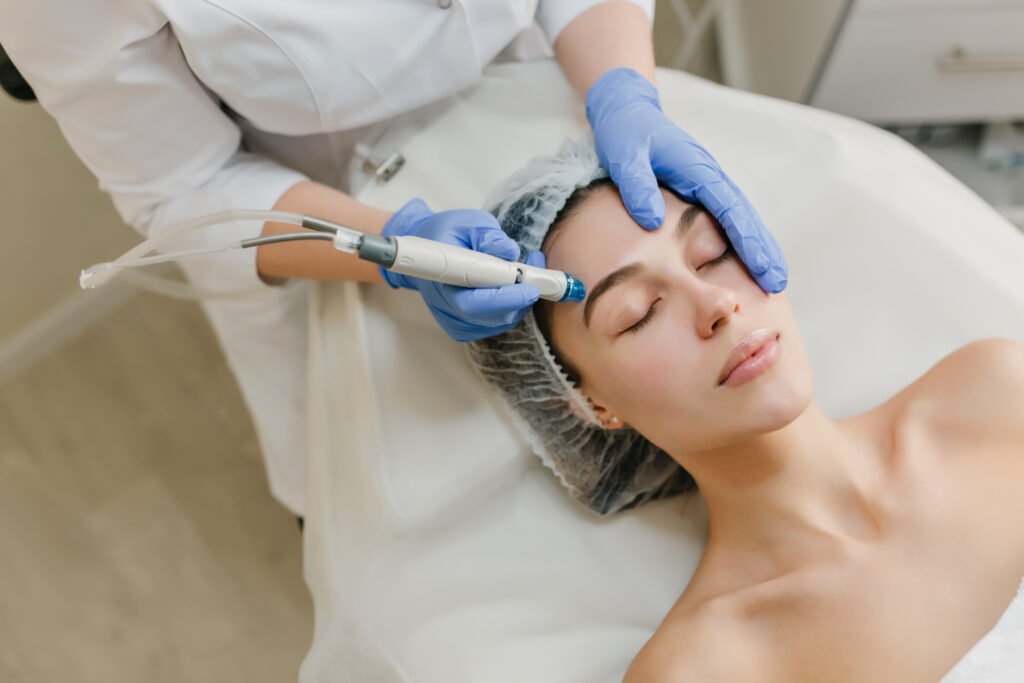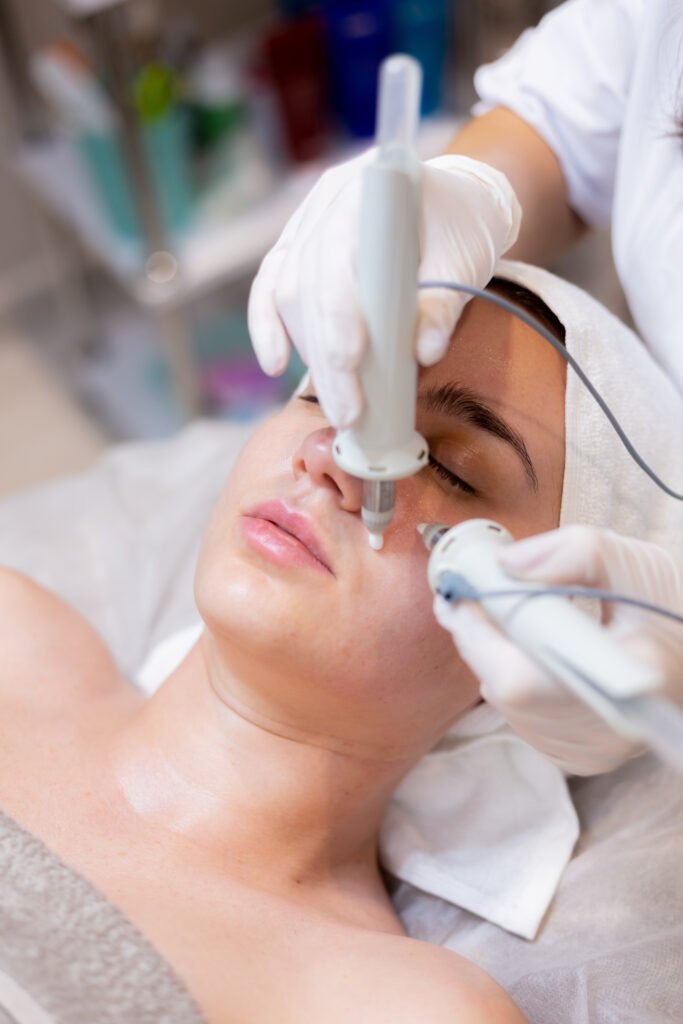Smooth Skin with Dermaplaning
Smooth Skin with Dermaplaning
Everything You Need to Know About This Exfoliation Treatment
If you’re looking for a skincare treatment that can instantly improve your complexion, dermaplaning for smooth and glowing skin might be just what you need. This popular procedure exfoliates your skin, removing dead skin cells and fine facial hair to reveal a brighter, more youthful appearance. It’s a simple, non-invasive way to rejuvenate your skin, and it’s loved by skincare enthusiasts and beauty professionals alike.
In this blog, we’ll cover everything you need to know about dermaplaning for radiant skin, including the process, benefits, aftercare, and how it compares to other exfoliation methods.

What Is Dermaplaning?
Dermaplaning is a cosmetic skin treatment that uses a specialized tool, typically a surgical scalpel, to gently scrape off the top layer of dead skin cells and peach fuzz. The process not only exfoliates but also enhances the skin’s ability to absorb skincare products and improves the application of makeup.
This treatment is suitable for nearly all skin types and is especially beneficial for those looking to achieve a smoother, brighter complexion without the use of chemicals or harsh scrubs.
Brief History and Evolution
Dermaplaning has been in use for a long time and has recently been embraced in the market as being efficient and having few side effects. It was first prescribed by dermatologists but is now in the spas and skincare clinics that may be accessible to a wide populace.
How Does Dermaplaning Work?
The procedure is straightforward and painless, often taking just 30 to 45 minutes. Here’s a step-by-step look at how dermaplaning for exfoliation and peach fuzz removal works:
Preparation
The skin is first cleansed to remove dirt, oil, and makeup. A professional will then assess your skin to ensure it’s ready for the procedure.
Exfoliation
Using a sterile scalpel held at a 45-degree angle, the specialist gently scrapes away dead skin cells and vellus hair (peach fuzz). This precise technique ensures smoothness and a natural glow.
Post-Treatment Care
After the procedure, soothing serums, moisturizers, and sunscreen are applied to protect and nourish the freshly treated skin.

Benefits of Dermaplaning
Dermaplaning offers a variety of benefits that make it a go-to treatment for achieving a radiant complexion. Here are the top advantages:
- Immediate Results
Unlike some treatments that require multiple sessions to show results, dermaplaning delivers an instant improvement in skin texture and brightness.
2. Non-Invasive and Safe
As a non-invasive treatment, dermaplaning doesn’t involve chemicals, needles, or downtime. It’s a gentle option for those with sensitive skin.
3. Improves Product Absorption
With the barrier of dead skin cells removed, your skincare products can penetrate deeper, making them more effective.
4. Enhances Makeup Application
The smooth surface created by dermaplaning allows foundation and other makeup to glide on effortlessly, resulting in a flawless finish.
6. Reduces Fine Lines and Mild Scarring
While not a cure for deep wrinkles or scars, dermaplaning can minimize the appearance of fine lines and minor acne scars.
Who Can Benefit from Dermaplaning?
Dermaplaning is suitable for most individuals, but it’s especially beneficial for those with:
- Dry or rough skin: Exfoliation helps remove flaky patches.
- Fine facial hair: Peach fuzz can trap oil and makeup, which dermaplaning eliminates.
- Dull complexion: The treatment restores brightness and vitality to the skin.
- Mild acne scars or fine lines: It smooths out uneven skin texture.
However, it’s not recommended for individuals with active acne, open wounds, or skin conditions such as eczema or rosacea. Always consult a professional to determine if dermaplaning is right for your skin type.
How Often Should You Dermaplane?
The frequency of dermaplaning depends on your skin’s needs and how quickly it regenerates. On average, most people benefit from dermaplaning every 4 to 6 weeks. Regular sessions can maintain the smoothness and radiance of your skin while supporting cell turnover.
Dermaplaning vs. Other Exfoliation Methods
Dermaplaning is just one of many exfoliation techniques available. Here’s how it compares to other popular options:
1. Dermaplaning vs. Microdermabrasion
- Dermaplaning: Uses a blade to remove dead skin and peach fuzz. It’s gentler and better suited for sensitive skin.
- Microdermabrasion: Uses a device with abrasive tips to exfoliate the skin, which can be harsher on delicate areas.
2. Dermaplaning vs. Chemical Peels
- Dermaplaning: A physical exfoliation method that works immediately.
- Chemical Peels: Use acids to dissolve dead skin cells. They often require downtime and may cause irritation.
3. Dermaplaning vs. Facial Scrubs
- Dermaplaning: More precise and effective at removing both dead skin cells and fine hair.
- Scrubs: Provide surface-level exfoliation and can sometimes be too abrasive.

What to Expect After Dermaplaning
After dermaplaning, your skin will likely feel incredibly smooth and look noticeably brighter. Here’s what you should do to maintain the results:
1.Apply Sunscreen
Your skin will be more sensitive to the sun, so use a broad-spectrum SPF of 30 or higher.
2. Avoid Harsh Products
Steer clear of exfoliants, retinoids, and other strong skincare ingredients for at least 48 hours.
3. Keep Skin Hydrated
Moisturize regularly to lock in hydration and maintain the smooth texture.
4. Minimize Makeup Use
Avoid heavy makeup for the first 24 hours to let your skin breathe and recover fully.
The Dermaplaning Procedure
Step-by-Step Process
- Cleansing: The skin is thoroughly cleansed to remove any makeup, dirt, and oils.
- Dermaplaning: The professional uses a sterile scalpel to gently exfoliate the skin.
- Hydration: After dermaplaning, a soothing and hydrating product is applied to calm the skin.

Frequently Asked Questions About Dermaplaning
Frequently Asked Questions (FAQ)
1. Does Dermaplaning Hurt?
No, dermaplaning is a painless procedure. Most clients describe it as a gentle scraping sensation.
2.Will My Hair Grow Back Thicker?
No, dermaplaning does not alter the thickness or texture of your hair. Peach fuzz will grow back the same as before.
3. Can I Dermaplane at Home?
While DIY kits are available, professional dermaplaning ensures safety, effectiveness, and precision.
4. Is Dermaplaning Suitable for Acne-Prone Skin?
Dermaplaning should be avoided if you have active acne, as it can irritate the skin and worsen inflammation.
5. Who should avoid dermaplaning?
Dermaplaning may not be suitable for those with active acne, rosacea, or severe skin sensitivities. It’s best to consult with a skincare professional to determine if dermaplaning is right for you.
Conclusion
Dermaplaning for smooth and glowing skin is an excellent choice for those looking to improve their complexion with minimal effort and no downtime. Whether you want to enhance your skincare routine, achieve a flawless makeup finish, or simply enjoy a refreshed look, dermaplaning can deliver stunning results.
Before undergoing the procedure, consult a licensed skincare professional to ensure it’s suitable for your skin type and needs. With proper aftercare and regular sessions, dermaplaning can help you achieve and maintain radiant, youthful-looking skin.

We, at Ryan Clinic strive to treat each and every skin and hair related issue in the best and simplest possible manner. Our 90% treatments are prescription based where no procedure is required.
